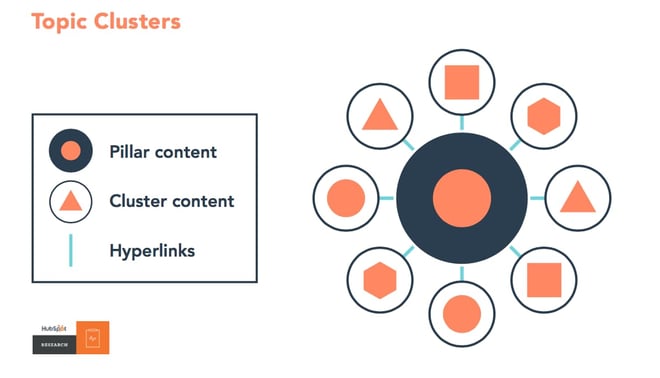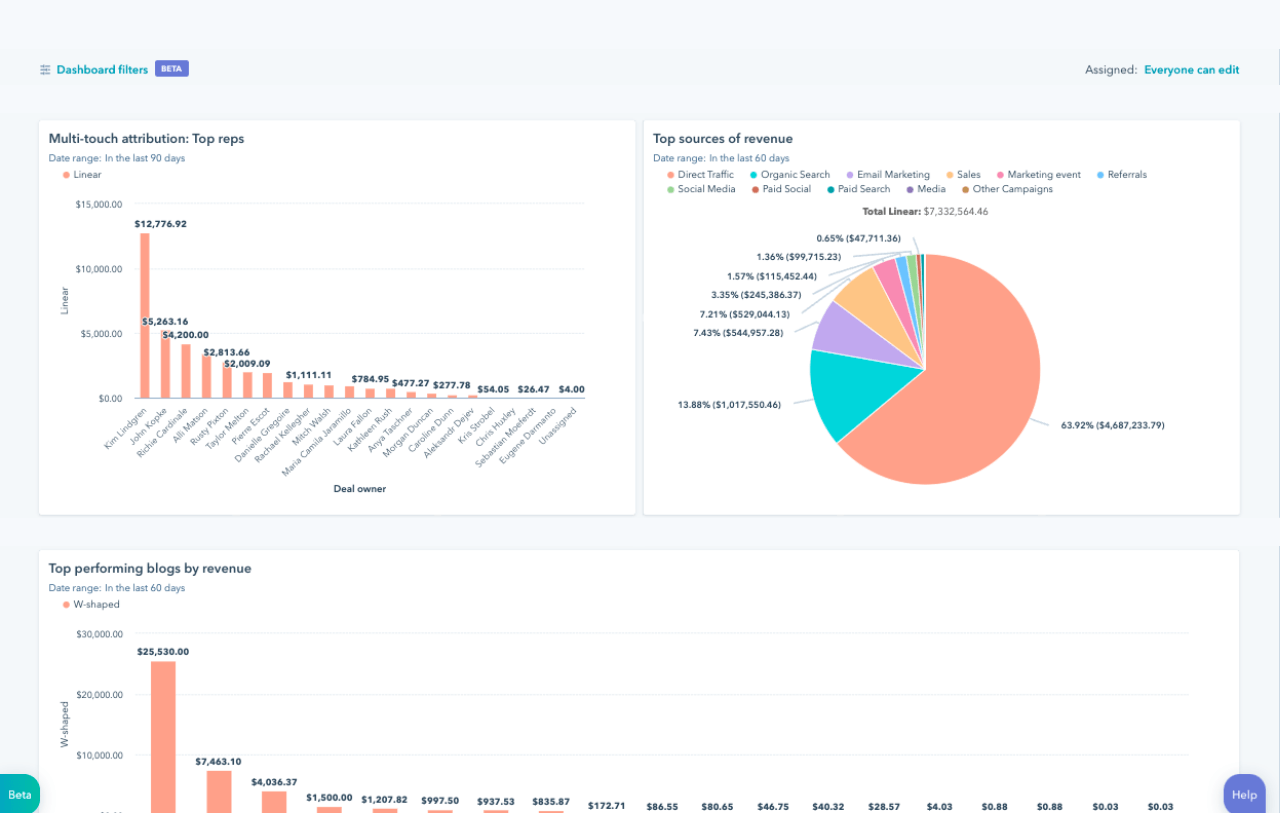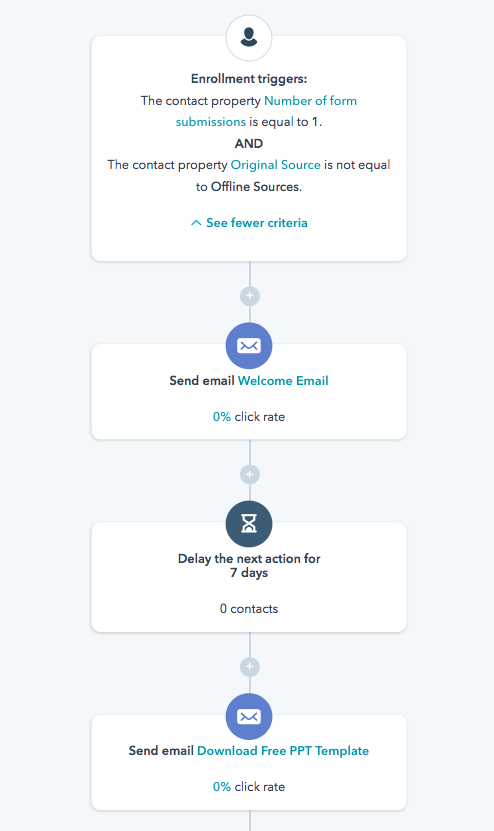Learn how to leverage HubSpot's marketing automation tools to enhance customer engagement and drive business growth.
Harnessing the Potential of Marketing Automation
.png?width=500&height=500&name=Bantam%20Icons%20and%20Characters%20(31).png)
Marketing automation offers numerous benefits for businesses looking to boost customer engagement. Businesses can save time and resources by automating repetitive tasks and streamlining workflows while ensuring consistent and targeted communication with their audience.
One key benefit of marketing automation is the ability to nurture leads effectively. With automated email campaigns and personalized content, businesses can guide prospects through the buyer's journey, providing them with relevant information and offers at each stage. This helps build trust and increase the likelihood of conversion.
Additionally, marketing automation allows businesses to segment their audience and deliver tailored messages to different customer segments. By analyzing customer data and behavior, businesses can create personalized experiences that resonate with their target audience, leading to higher engagement and customer satisfaction.
Furthermore, marketing automation provides valuable insights into customer behavior and campaign performance. By tracking metrics such as open rates, click-through rates, and conversion rates, businesses can measure the effectiveness of their marketing efforts and make data-driven decisions to optimize their strategies.
In summary, marketing automation empowers businesses to harness technology's potential to enhance customer engagement. By automating tasks, nurturing leads, personalizing interactions, and measuring success, businesses can drive growth and establish long-lasting relationships with their audience.
Enhancing Productivity with Automated Workflows in HubSpot
.png?width=500&height=500&name=Bantam%20Icons%20and%20Characters%20(33).png)
HubSpot's marketing automation platform offers powerful tools for enhancing productivity and streamlining workflows. With HubSpot, businesses can create automated workflows that seamlessly integrate marketing, sales, and service activities, resulting in a more efficient and streamlined operation.
One of the key features of HubSpot's marketing automation is the ability to automate lead nurturing. By setting up automated email sequences, businesses can deliver targeted content to leads based on their behavior and stage in the buyer's journey. This helps to keep leads engaged and move them closer to making a purchase.
Another benefit of HubSpot's automated workflows is the ability to automate repetitive tasks. Businesses can create workflows to automatically assign tasks, send notifications, and update contact records, saving time and ensuring that nothing falls through the cracks.
Furthermore, HubSpot offers advanced personalization capabilities that allow businesses to tailor their communications based on individual customer data. By dynamically inserting personalized information into emails and landing pages, businesses can create a more personalized and relevant experience for their audience.
In conclusion, HubSpot's marketing automation tools enable businesses to enhance productivity and streamline workflows. By automating lead nurturing, automating repetitive tasks, and leveraging personalization, businesses can maximize efficiency and drive better results.
Personalizing Customer Interactions with Automation
Personalization is a key aspect of effective customer engagement, and marketing automation enables businesses to deliver personalized experiences at scale. By leveraging customer data and behavior, businesses can create targeted and relevant interactions that resonate with their audience.
With marketing automation, businesses can segment their audience based on various criteria such as demographics, behavior, and preferences. This allows them to deliver personalized content and offers to different customer segments, increasing the likelihood of engagement and conversion.
In addition to segmentation, marketing automation enables businesses to dynamically personalize their communications. By using merge tags and dynamic content, businesses can insert personalized information into emails and landing pages, such as the recipient's name, company, or past interactions. This creates a more personalized experience that captures the attention of the recipient and encourages them to take action.
Moreover, marketing automation allows businesses to track and analyze customer interactions in real-time. By monitoring how customers engage with emails, website pages, and other marketing assets, businesses can gain insights into their preferences and tailor future interactions accordingly.
To summarize, marketing automation empowers businesses to personalize customer interactions at scale. By segmenting their audience, dynamically personalizing communications, and analyzing customer behavior, businesses can deliver targeted and relevant experiences that drive engagement and build lasting relationships.
Leveraging Lead Scoring for Enhanced Customer Engagement
.png?width=500&height=500&name=Bantam%20Icons%20and%20Characters%20(27).png)
Lead scoring is a technique used by businesses to prioritize and qualify leads based on their likelihood to convert. By assigning a score to each lead based on their demographic information, behavior, and engagement with marketing activities, businesses can focus their resources on leads that are most likely to become customers.
Marketing automation platforms like HubSpot offer lead scoring capabilities that enable businesses to automate the lead qualification process. By defining scoring criteria and rules, businesses can assign points to leads based on factors such as job title, industry, website visits, email opens, and form submissions.
Once leads are scored, businesses can use this information to prioritize their follow-up actions. High-scoring leads can be handed off to the sales team for immediate attention, while low-scoring leads can be further nurtured through automated email campaigns and targeted content.
Lead scoring also allows businesses to track the effectiveness of their marketing efforts and identify areas for improvement. By analyzing the scores of converted leads and comparing them to non-converted leads, businesses can gain insights into the characteristics and behaviors of their most valuable customers.
In conclusion, lead scoring is a valuable strategy for enhancing customer engagement. By leveraging lead scoring capabilities in marketing automation platforms, businesses can prioritize leads, optimize their follow-up actions, and gain insights into their target audience.
Measuring Success and Optimizing Automation Strategies
Measuring the success of marketing automation efforts is crucial for optimizing strategies and driving continuous improvement. By tracking key metrics and analyzing campaign performance, businesses can gain insights into the effectiveness of their automation strategies and make data-driven decisions.
One important metric to track is the conversion rate. By monitoring how many leads or prospects take the desired action, such as making a purchase or filling out a form, businesses can assess the effectiveness of their automated workflows and make necessary adjustments.
Another important metric is engagement rate, which measures how actively leads and customers interact with marketing assets. By analyzing metrics such as email open rates, click-through rates, and website engagement, businesses can identify areas for improvement and optimize their automation strategies to increase engagement.
Furthermore, businesses should track customer retention and satisfaction metrics to ensure that their automation strategies are delivering long-term value. By monitoring metrics such as customer churn rate, customer lifetime value, and Net Promoter Score (NPS), businesses can assess the impact of their automation efforts on customer loyalty and satisfaction.
In addition to tracking metrics, businesses should regularly review and analyze their automation workflows to identify bottlenecks, inefficiencies, and opportunities for improvement. By conducting A/B tests, experimenting with different messaging and offers, and analyzing the results, businesses can optimize their automation strategies and drive better results.
To summarize, measuring success and optimizing automation strategies is essential for maximizing the benefits of marketing automation. By tracking key metrics, monitoring engagement, and continuously improving workflows, businesses can drive growth and achieve their customer engagement goals.

.png?width=1000&height=500&name=Bantam%20Logo%20Final%20Horizontal%202025%20(2).png)
%20(16).jpg?width=2078&height=496&name=Untitled%20(2078%20x%20496%20px)%20(16).jpg)






